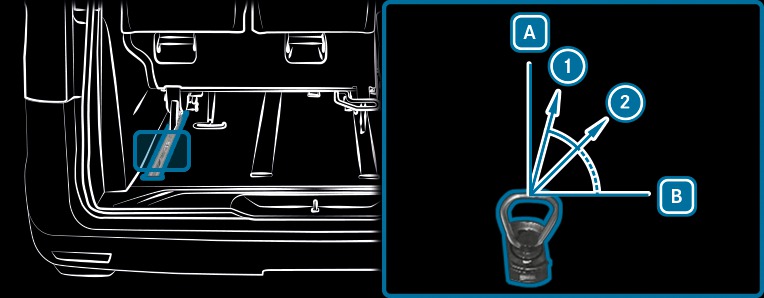If you combine various lashing points to secure a load, always take the maximum loading capacity of the weakest lashing point into account.
During maximum full-stop braking, forces may act which can multiply the weight of the load.
Information on the maximum loading capacity of the lashing points can be found under "Technical data" in the printed Operating Instructions.
The load is secured against slipping, tipping, rolling or falling off.
Take usual traffic conditions as well as swerving or full brake application and bad roads into account.
The applicable requirements and guidelines relating to load-securing practices are met.
If this is not the case, this may constitute a punishable offence, depending on local legislation and any ensuing consequences. Observe country-specific laws.
Make sure that the load is secure before every journey and at regular intervals during a long journey. Adjust the load securing as necessary. Information on how to secure loads correctly can be obtained from the manufacturers of the load securing aids or lashing material for load securing, for example.
Also observe the notes on loading guidelines More.
Fill spaces between the load and the load compartment walls or wheel wells. For this purpose, use rigid load securing aids, such as wedges, wooden fixings or padding.
Attach secured and stabilised loads in all directions.
Use the lashing points or the tie-down eyes and guide rails in the rear compartment.
Only use lashing material, such as lashing nets and lashing straps, which has been tested in accordance with current standards (e.g. DIN EN). Always use the lashing points closest to the load; pad sharp edges.
You can obtain lashing material tested in accordance with current standards (e.g. DIN EN) from a specialist company or from a qualified specialist workshop.





The lashing angle is the angle formed between the load compartment floor and the lashing material. For optimum load securing in accordance with standard ISO 27955 the lashing angle must be between 45°  and 75°
and 75°  . The maximum nominal tensile load of 350 daN for the tie-down eyes in the load compartment floor or in the guide rails may not be exceeded.
. The maximum nominal tensile load of 350 daN for the tie-down eyes in the load compartment floor or in the guide rails may not be exceeded.

